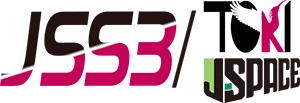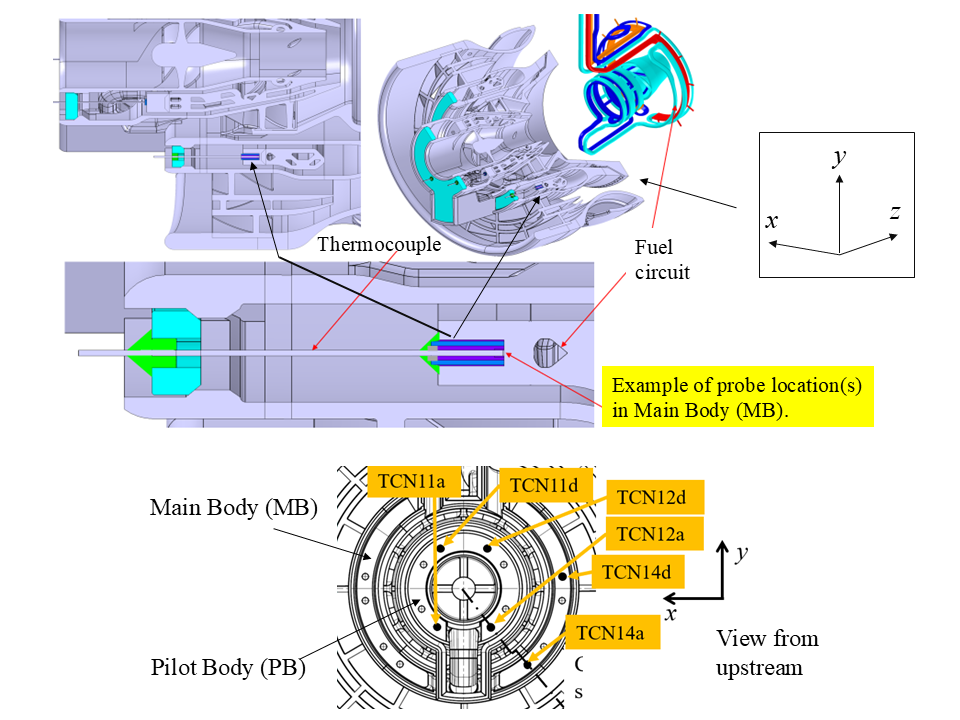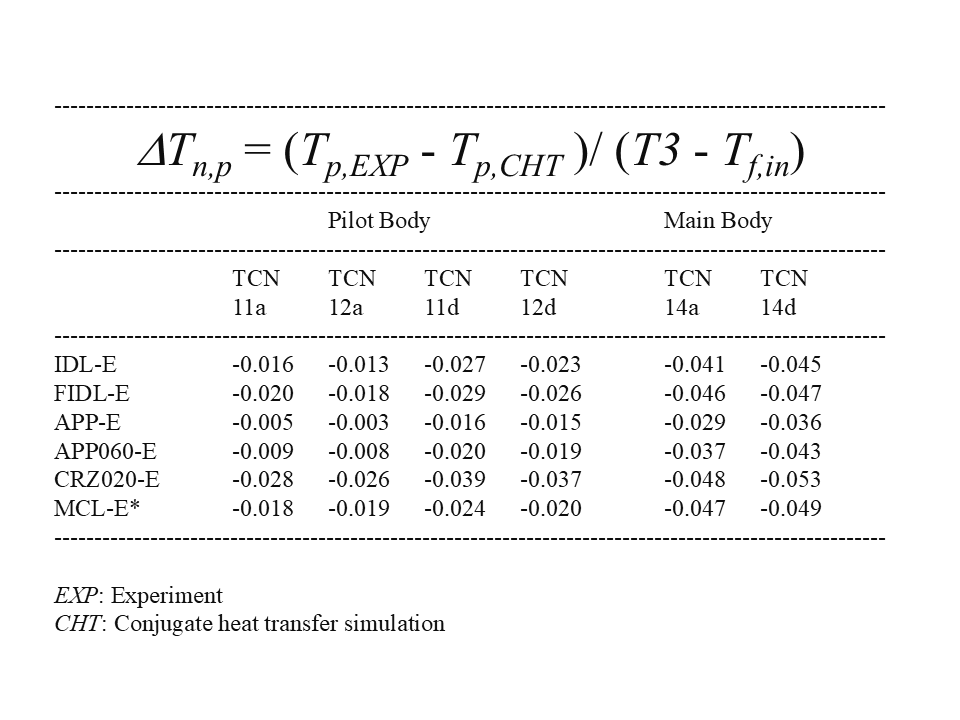Numerical analysis on fuel injector design
JAXA Supercomputer System Annual Report February 2024-January 2025
Report Number: R24EBA30201
Subject Category: Aeronautical Technology
- Responsible Representative: Takashi Yamane, Aeronautical Technology Directorate, En-Core Project team
- Contact Information: Kazuaki Matsuura, Japan Aerospace Exploration Agency, Aeronautical Technology Directorate, En-Core Project team(matsuura.kazuaki@jaxa.jp)
- Members: Kazuaki Matsuura, Jun Iino, Kinya Saito, Kunihiko Sakata, Aya Yoshida
Abstract
Numerical simulations of thermofluid dynamics are performed to optimize fuel injector design.
Reference URL
N/A
Reasons and benefits of using JAXA Supercomputer System
The use of supercomputer is necessary due to high computational load of thermofluid analysis on fuel injectors in complex design.
Achievements of the Year
Numerical simulations were performed on thermal protection of a coaxially-staged lean-burn fuel injector, in order to avoid fuel coking in its fuel circuits. Combustion experiments were also conducted at simulated flight conditions and temperatures at several locations in metal regions close to the fuel circuits were measured by thermocouples. The experimental results were compared with those by the simulations. The results of experiments and of the simulations were in good agreement, and the latter were slightly higher, meaning inclusion of safety margin which is preferable as a design evaluation tool.
Publications
- Non peer-reviewed papers
MATSUURA, K. and YAMAMOTO, T. : Development of anti-coking thermal management technologies for a coaxially-staged lean-burn fuel injector for high-pressure-ratio aero-engines. ~ First report: Evaluation of thermal protection performance and validation of numerical analysis by experiments in realistic environments. ~, JAXA-RM-24-008E (2025).
- Web
https://jaxa.repo.nii.ac.jp/records/2001693
Usage of JSS
Computational Information
- Process Parallelization Methods: MPI
- Thread Parallelization Methods: N/A
- Number of Processes: 1024
- Elapsed Time per Case: 144 Hour(s)
JSS3 Resources Used
Fraction of Usage in Total Resources*1(%): 1.30
Details
Please refer to System Configuration of JSS3 for the system configuration and major specifications of JSS3.
| System Name | CPU Resources Used(Core x Hours) | Fraction of Usage*2(%) |
|---|---|---|
| TOKI-SORA | 34088448.35 | 1.56 |
| TOKI-ST | 350998.79 | 0.36 |
| TOKI-GP | 0.00 | 0.00 |
| TOKI-XM | 0.00 | 0.00 |
| TOKI-LM | 0.00 | 0.00 |
| TOKI-TST | 0.00 | 0.00 |
| TOKI-TGP | 0.00 | 0.00 |
| TOKI-TLM | 0.00 | 0.00 |
| File System Name | Storage Assigned(GiB) | Fraction of Usage*2(%) |
|---|---|---|
| /home | 228.45 | 0.15 |
| /data and /data2 | 170521.67 | 0.82 |
| /ssd | 0.00 | 0.00 |
| Archiver Name | Storage Used(TiB) | Fraction of Usage*2(%) |
|---|---|---|
| J-SPACE | 0.09 | 0.00 |
*1: Fraction of Usage in Total Resources: Weighted average of three resource types (Computing, File System, and Archiver).
*2: Fraction of Usage:Percentage of usage relative to each resource used in one year.
ISV Software Licenses Used
| ISV Software Licenses Used(Hours) | Fraction of Usage*2(%) | |
|---|---|---|
| ISV Software Licenses(Total) | 0.00 | 0.00 |
*2: Fraction of Usage:Percentage of usage relative to each resource used in one year.
JAXA Supercomputer System Annual Report February 2024-January 2025




